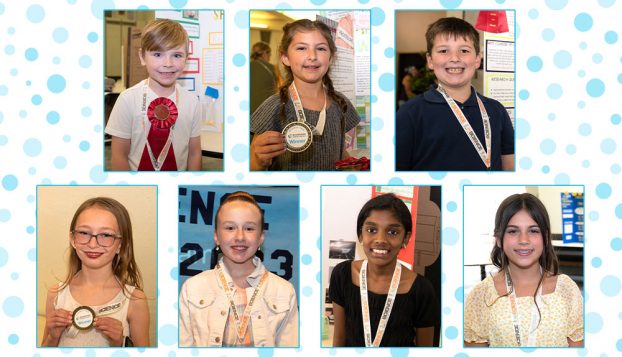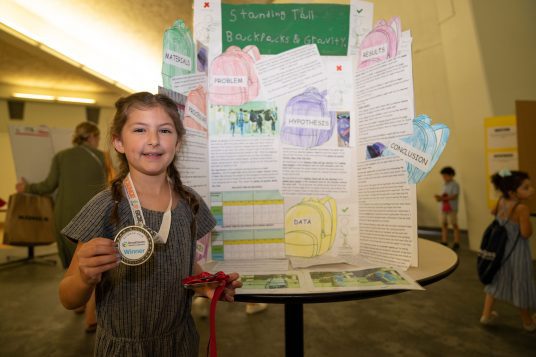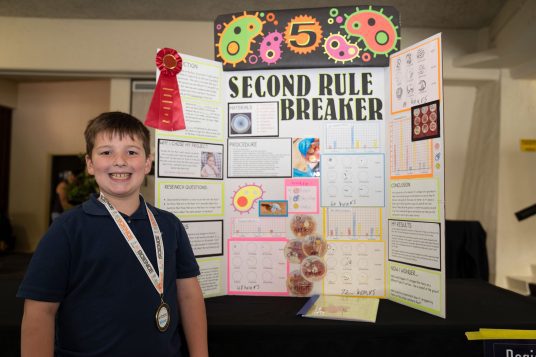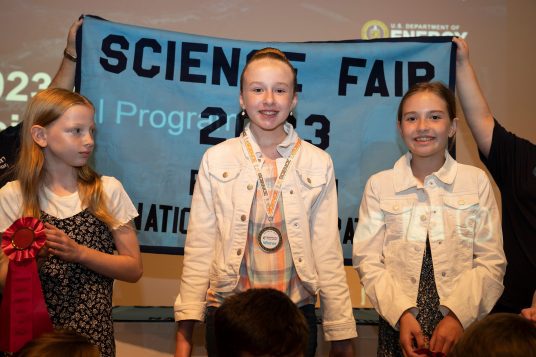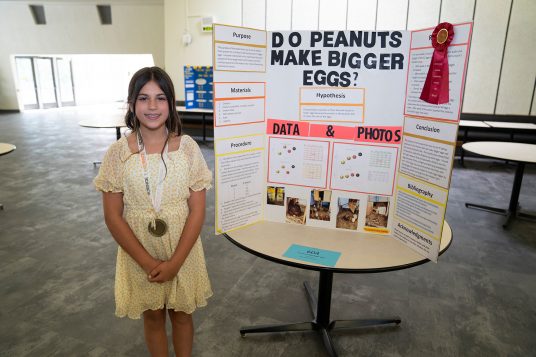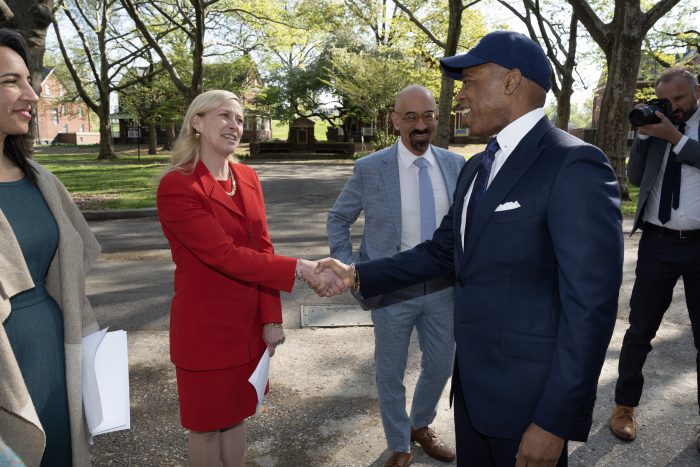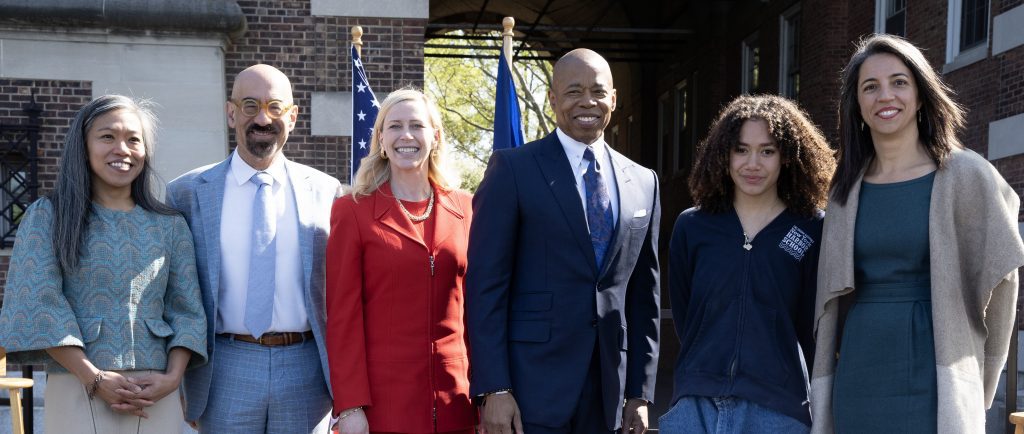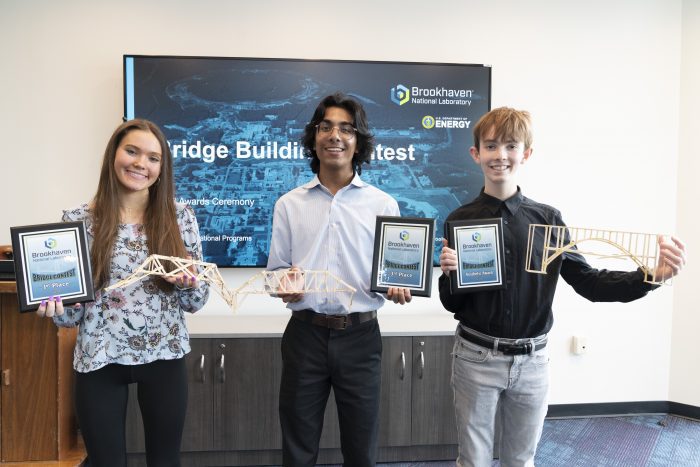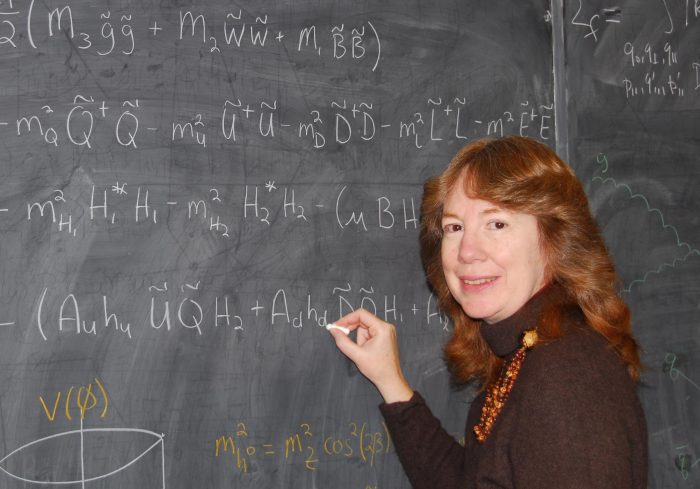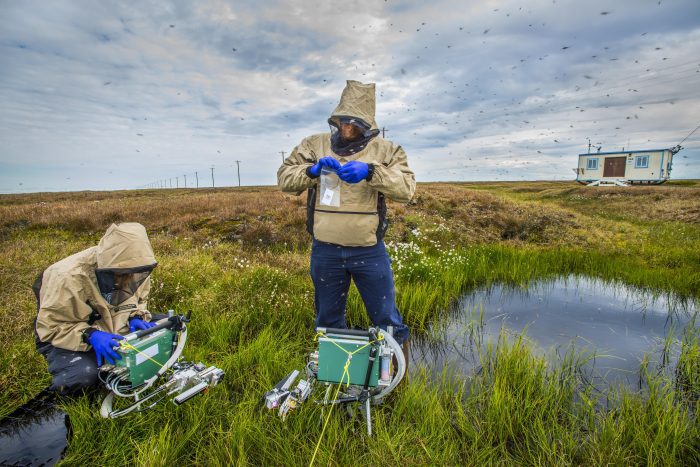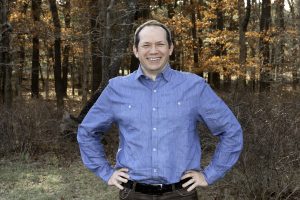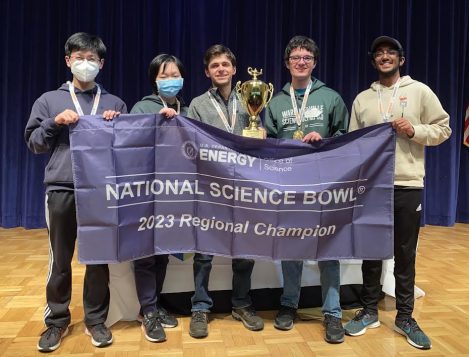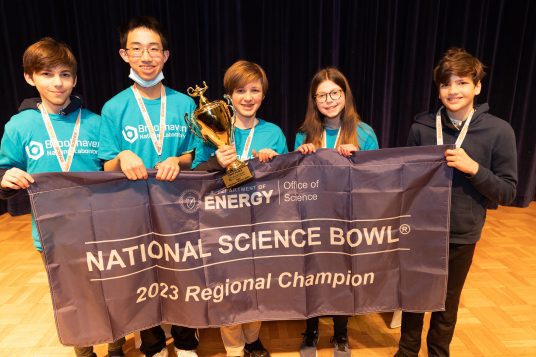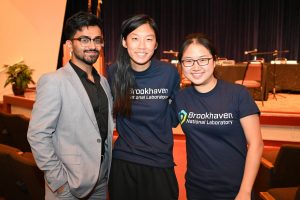How does the temperature of a magnet affect its strength? Why does honey come in different colors? Are permanent markers really permanent? Curious students from schools across Suffolk County shared questions they explored using the scientific method at the 2023 Elementary School Science Fair hosted by the U.S. Department of Energy’s Brookhaven National Laboratory on June 10.
“Students from kindergarten to sixth grade who participate in the science fair use the fundamental skills that are the basis of the science conducted here at Brookhaven National Lab,” said Bernadette Uzzi, manager for K-12 programs in the Lab’s Office of Educational Programs (OEP). “Our goal is to develop today’s students into tomorrow’s scientists and engineers.”
After going virtual for three years, the competition returned to an in-person showcase at the Lab where students were ready to share their results and attend an awards ceremony for their grade level.
From delving into the physics behind speedy lacrosse tosses to studying how different materials react in salt water to crafting a codable maze, student’s experiments connected to the basics of wide-ranging research happening at Brookhaven’s world-class facilities. Many students opted to tackle clean energy solutions, including experiments that tested solar cars, asked whether food waste can produce energy, and showed how hydrogen can be produced through water electrolysis for a clean fuel option.
Cameron Casey, a first grader from Charles E. Walters Elementary School, hypothesized that light energy changes based on location. He used machines equipped with small solar panels and topped with clear plates that would spin if powered with enough energy from the sun. The only plate that spun was attached to a solar cell place directly in the sunlight.
Casey said his favorite part of participating in the science fair was that it led him to Brookhaven Lab, a place he’d been wanting to visit for a while. “I’m really proud of it,” he said. “It worked so well that it got me all the way to here.”
Other students incorporated their pets and demonstrated their passion for nature and the environment through their projects.
It was her love of the ocean and surfing that inspired Tatiana Panuthos, a fifth grader from South Bay Elementary School, to investigate microplastic pollution. “When I’m out there, I see all the plastic and garbage in the ocean, so one day, I came home and was researching the plastics I saw in the ocean,” she said. “But then I found the bigger problem and we can’t even see it: microplastics.”
After learning that much of the microplastic pollution in our oceans comes from fabric and clothing, Panuthos chose to build an inexpensive and easy-to-install filter to capture microplastics streaming out of laundry cycles.
Charlie Furman, a second grader at Fifth Avenue Elementary School asked: Can pinecones predict the weather? “My hypothesis was that I think pinecones can predict the weather because they contain a living thing,” he said. He collected pinecones and compared how they reacted to different temperatures and humidity. He found that in the cold, pinecones closed to protect their seeds, but opened as temperatures warmed up. It’s a test-the-weather project anyone can try out at home, he said.
Brookhaven Lab staff and local teachers volunteered as judges and event help.
“I love that the students are learning the scientific method,” said Kathy Haack, a science fair volunteer who teachers K-5 science at Westhampton Beach Elementary School. “They learn the difference between experiments and demonstrations, and the difference between an engineering project and an experiment.”
Science Fair awards
The following students earned first place in their grade level:
◆ Kindergartener Cameron Wallace of Clayton Huey Elementary School, Center Moriches School District for “The Best Way to Ship a Chip.”
◆ First grader Siena Roseto of Cutchogue East Elementary School, Mattituck-Cutchogue School District for “Standing Tall Backpacks and Gravity.”
◆ Second grader Vincent Calvanese of Pines Elementary School, Hauppauge School District for “5 Second Rule-Breaker.”
◆ Third grader Juliana Gianmugnai of Ridge Elementary School, Longwood Central School District for “Which One is the Best Filter Feeder: Oysters or Clams?”
◆ Fourth grader Emma Kowalik, of Ruth C. Kinney Elementary School, East Islip School District for “Loaded Diapers.”
◆ Fifth grader Aditri Arun of Bretton Woods Elementary School, Hauppauge School District for “How to Keep Batteries from Draining in Extreme Weather.”
◆ Norah Sobral of Babylon Memorial Grade School, Babylon School District for “Do Peanuts Make Bigger Eggs?”
Honorable mentions
Kindergarten: Ava D’Alsace of Riley Avenue Elementary School, Riverhead Central School District; Michael DeLuca of Forest Brook Elementary School, Hauppauge School District
First Grade: Rebecca Tyler of Miller Avenue School, Shoreham-Wading River School District; Advika Arun of Bretton Woods Elementary School, Hauppauge School District; George Miyagishi of Park View Elementary School, Kings Park Central School District
Second Grade: Leah Cook of Riley Avenue Elementary School, Riverhead Central School District; Isla Loudenslager of Hampton Bays Elementary School, Hampton Bays Public Schools; Clayton Roberts of Sunrise Drive Elementary School, Sayville Union Free School District
Third Grade: Taran Sathish Kumar of Bretton Woods Elementary School, Hauppauge School District; Kendall Harned of Wenonah Elementary School, Sachem Central School District; Kensley Chojnacki of Park View Elementary School, Kings Park Central School District
Fourth Grade: Margaret O’Callaghan of Laddie A. Decker Sound Beach School, Miller Place School District; Declan Floyd of Sunrise Drive Elementary School, Sayville Union Free School District; John Kreuscher of Cherry Avenue Elementary School, Sayville Union Free School District; Isabella St. Pierre of Joseph A. Edgar Intermediate School, Rocky Point Union Free School District; Isabella Maharlouei of Raynor Country Day School; Aubrey Urbaniweicz of West Middle Island Elementary School, Longwood Central School District
Fifth Grade: Ethan Behrens of Tangier Smith Elementary School, William Floyd School District; Laia Balcells, Raynor Country Day School; John Locke of Love of Learning Montessori, Centerport
Sixth Grade: Mihir Sathish Kumar of Hauppauge Middle School, Hauppauge School District; Ben DeSantis of Cutchogue East Elementary School, Mattituck-Cutchogue School Distric
The 2023 Brookhaven National Laboratory Elementary School Science Fair was sponsored by Brookhaven Science Associates, which manages and operates the Lab on behalf of Department of Energy, and Teachers Federal Credit Union. For more information, please visit www.bnl.gov.

